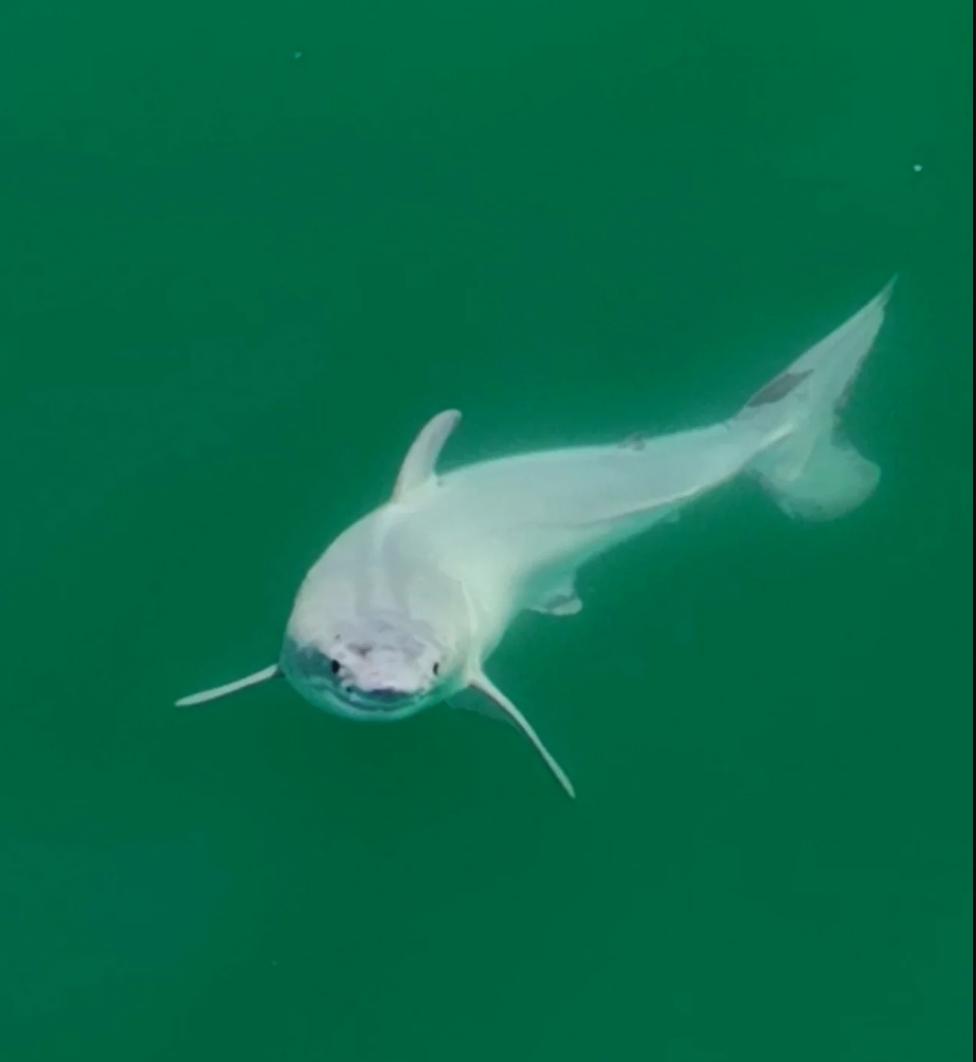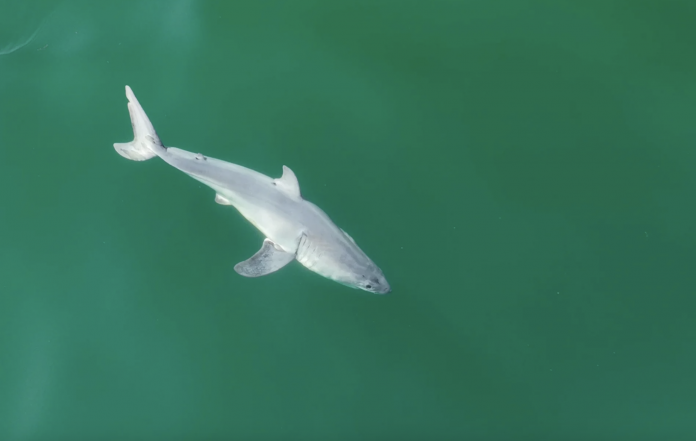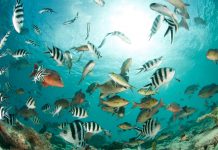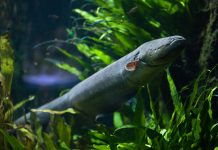For the first time, a newborn great white shark has been spotted off Santa Barbara, California’s coast, revealing insights into the birthing habits of sharks that were until now a mystery
Newborn great white sharks have never been spotted in the wild until now. Wildlife filmmaker Carlos Gauna, also known as The Malibu Artist, and UC Riverside biology doctoral student Phillip Sternes captured incredible footage of a newborn great white shark.
The sighting was documented in a recent paper published in the Environmental Biology of Fishes journal, which could provide valuable insights into the birthing habits of these oceanic giants.
The unexpected finding
Gauna and Sernes were conducting routine shark observations near Santa Barbara on July 9, 2023, when their drone camera revealed the sighting. The camera revealed a 5-foot shark, distinctively pure white instead of the typical grey and white of great whites; this caught their attention.
After closer inspection, they observed a white layer on the shark’s body being shed as it swam. Sternes speculated, “I believe it was a newborn white shark shedding its embryonic layer.” The researchers enlarged the images in slow motion to confirm their findings.

The mystery of great white birthing habits
The birthing habits of great white sharks have remained a mystery in shark science for decades. Gauna emphasised, “Where white sharks give birth is one of the holy grails of shark science. No one has ever been able to pinpoint where they are born, nor has anyone seen a newborn baby shark alive.”
The observed shark’s shedding behaviour could offer virtual information. At the same time, the authors acknowledged the possibility of skin conditions, but they argue that conditions like this have never been reported for great whites.
Gauna added, “If that is what we saw, then that too is monumental because no such condition has ever been reported for these sharks.”
“No one has ever been able to pinpoint where they are born, nor has anyone seen a newborn baby shark alive.”
Evidence supporting the newborn great white shark
Gauna and Sternes have given several reasons to support their belief that the shark they observed was a newborn great white. Firstly, female great whites give birth to live pups, and the embryonic sharks may feed on unfertilised eggs for protein while in utero.
The mothers also provide additional nourishment through ‘milk’ secreted in the uterus. Sternes suggested, “I believe what we saw was the baby shedding the intrauterine milk.”
Secondly, the location of the sighting coincided with the presence of large, likely pregnant great white sharks. Gauna had previously observed pregnant sharks in the area, strengthening the correlation. “It’s not a stretch to deduce where the baby came from,” Gauna noted.
Thirdly, the observed shark’s size and shape align with the characteristics of a newborn. Sternes described it as thin, short, and rounded, estimating its age to be hours or, at most, one day old.
Lastly, the central California location, approximately 1,000 feet from the beach, has long been proposed as a potential birthing site for great whites. Sternes emphasised, “This may well be the first evidence we have of a pup in the wild, making this a definitive birthing location.”
What does this mean for the species?
Great white sharks are listed as an international endangered species, highlighting the need for further research to confirm whether these waters serve as a breeding ground.
Sternes suggests, “If it does, we would want lawmakers to step in and protect these waters to help white sharks keep thriving.”














